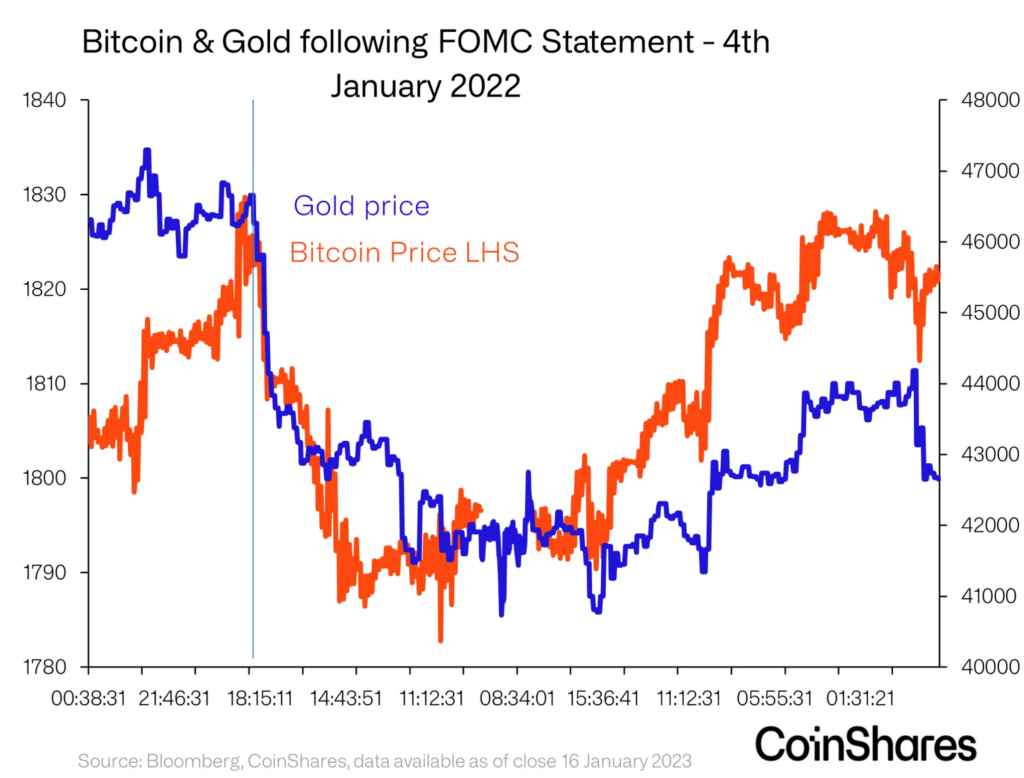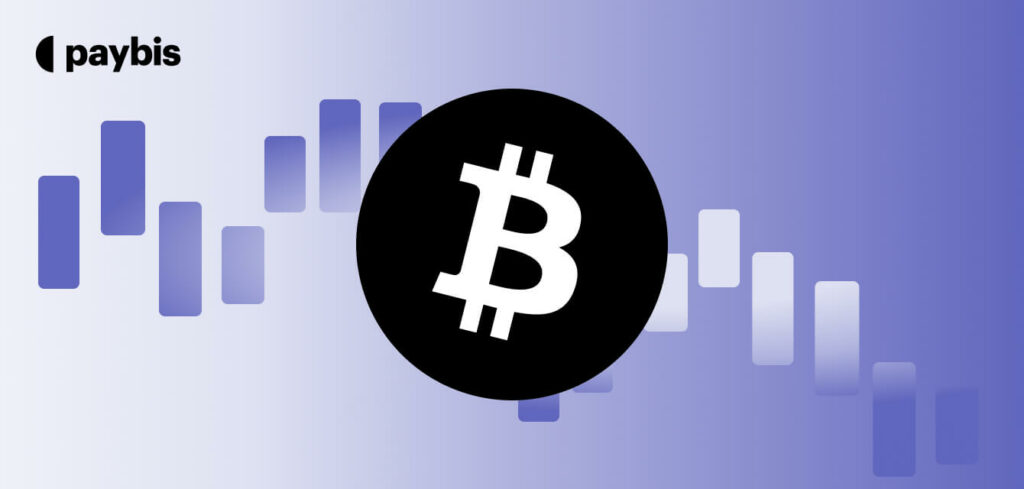Why is Bitcoin Rising? Analyzing Key Factors
From its humble beginnings as a digital experiment in 2009, Bitcoin has grown to become a global phenomenon, capturing the imaginations of investors, businesses, and even governments.
Understanding the factors behind this remarkable rise requires an exploration of several key factors.
This article helps you understand why Bitcoin is rallying upwards.
Table of contents
Bitcoin’s Deflationary Nature
Unlike traditional currencies that are prone to inflation through central bank printing, Bitcoin broadcasts a fixed supply of 21 million coins. This scarcity, coupled with the halving mechanism (reduction of mining rewards every 4 years), makes it deflationary. As the supply remains constant while demand increases, the price can potentially go up in the long run.
Bitcoin’s fixed supply of 21 million coins and halving mechanism remain key factors in its potential long-term value increase.
As of March 2024, over 19.2 million BTC have been mined, leaving roughly less than 1.8 million to be mined in the future, and the next halving is expected in May 2024 which further lowers the BTC produced per block..
Imagine a scenario where gold, a traditionally scarce asset, was discovered to have a finite and limited amount available for mining. This sudden realization of a finite supply could potentially drive up its value due to its inherent scarcity. Bitcoin, in its digital form, functions similarly. That is why it is sometimes referred to as “digital gold.”
The graph below shows the correlation between gold price and Bitcoin price. This will help understand why BTC is referred to as digital gold.
Growing Demand and Adoption: From Niche to Mainstream
Several factors contribute to the rise in demand for Bitcoin. Some of them are highlighted here.
Institutional Investors Entering the Space
Major financial institutions like BlackRock and Goldman Sachs are no longer strangers to Bitcoin. They are actively exploring exposure to this digital asset, leading to increased buying pressure.
According to CoinShares, institutional investors invested an estimated $1.93 billion in Bitcoin throughout 2023, marking a significant rise compared to previous years. This signifies a growing level of institutional confidence in the long-term potential of Bitcoin.
Demand and Sentiment
Increased demand for Bitcoin plays a role in price appreciation. Notably, the anticipation of the 2024 halving has contributed to the recent price surge, as investors expect a further reduction in supply to potentially drive up prices.
Additionally, institutional investment has been steadily increasing, with major firms like BlackRock and Goldman Sachs exploring Bitcoin exposure. In 2023 alone, institutional investment in Bitcoin reached an estimated $2.22 billion from $816 million in 2022.
The Rise of Web3
The emergence of web3, a decentralized internet built on blockchain technology, has also impacted Bitcoin’s price.
Web3 applications, such as decentralized finance (DeFi) and non-fungible tokens (NFTs), often require cryptocurrencies like Bitcoin for participation. This increased utility and integration with the broader blockchain ecosystem could contribute to long-term demand for Bitcoin.
Factors Affecting Price Fluctuations
There are many developments in the Bitcoin ecosystem that have contributed to the sudden upshot of BTC price. Here are a few of them:
- Approval of Spot Bitcoin ETFs
- Upcoming BTC Halving
- Demand for Bitcoin Ordinals and BRC-20 Tokens
- The Rise of BNS Names
- Introducing Bitcoin Stamps and SRC-20 Tokens
- Favorable Regulatory Landscape
- The Media Effect
Let’s take a closer look into each of them.
Approval of Spot Bitcoin ETFs
The long-awaited approval of Spot Bitcoin Exchange-Traded Funds (ETFs) by the US Securities and Exchange Commission (SEC) in January 2024 has undeniably influenced Bitcoin’s price surge.
These ETFs allow investors to gain exposure to Bitcoin through traditional financial markets, potentially attracting new investors who were previously hesitant due to the complexities of directly buying and holding Bitcoin.
This accessibility is and acceptance of Bitcoin by the SEC has contributed to a tremendous inflow of capital into BTC, which consequently raised the price.
Upcoming BTC Halving
The excitement surrounding the upcoming Bitcoin halving in May 2024 is palpable.
The halving creates scarcity by limiting the new supply of Bitcoin. This, in theory, could lead to higher demand and potentially drive up the price, similar to how limited-edition items often hold higher value.
Historically, Bitcoin price surges have followed halving events. While past performance doesn’t guarantee future results, these historical trends can influence investor sentiment and lead to increased buying activity in anticipation of similar price movements.
Demand for Bitcoin Ordinals and BRC-20 Tokens
Bitcoin Ordinals and BRC-20 tokens have recently emerged as innovative additions to the Bitcoin ecosystem, sparking curiosity and debate within the crypto community.
The creation and trading of Bitcoin Ordinals lead to a surge in on-chain activity, increasing demand for block space. This translates into higher Bitcoin transaction fees, which directly benefit miners and potentially attract more miners to the network, further strengthening its security and potentially raising Bitcoin’s overall value.
The Rise of BNS Names
Short for Bitcoin Name Service, BNS domains act as user-friendly addresses built on the Stacks blockchain, which leverages the security and robustness of the Bitcoin blockchain.
Just like Ordinals and BRC-20 tokens, the registration and trading of BNS names fuel demand for block space on the Bitcoin network. Increased on-chain activity translates to higher transaction fees, benefiting miners and potentially contributing to Bitcoin’s perceived value.
Introducing Bitcoin Stamps and SRC-20 Tokens
Bitcoin Stamps, built on the SRC-20 token standard, are essentially digital collectibles with unique identifiers stored permanently on the Bitcoin blockchain.
Like Ordinals, Bitcoin Stamps capitalize on the inherent scarcity of Bitcoin’s block space and the growing interest in the digital collectibles market. Their unique, permanent nature on the blockchain can increase their perceived value for collectors and enthusiasts.
The creation, storage, and trading of Bitcoin Stamps consume block space on the Bitcoin network. This competition for resources drives up transaction fees, enhancing the revenue potential for miners and contributing to Bitcoin’s overall valuation.
The Media Effect
Media coverage plays a significant role in influencing market sentiment. While positive news, such as the launch of innovative crypto projects or supportive government regulations, can trigger buying sprees and drive prices up, negative press surrounding hacks, security breaches, or environmental concerns can lead to panic selling and price drops.
For example, in May 2021, Elon Musk, a prominent tech entrepreneur, announced that Tesla would no longer accept Bitcoin payments due to environmental concerns. This news triggered a significant sell-off and sent Bitcoin’s price plummeting. This episode exemplifies the double-edged sword of media influence on the volatile cryptocurrency market.
Learning from Bitcoin’s Trajectory
Studying Bitcoin’s past can potentially give us a glimpse of the future.
Long-Term Trend
While short-term fluctuations are inevitable, Bitcoin exhibits a long-term upward trend on a logarithmic scale.
Bear Markets
After rapid price surges, bear markets are still expected. However, the timing and severity of these downturns are difficult to predict.
Unpredictability
Predicting Bitcoin’s future price remains impossible; however, its historical performance suggests a potential for long-term growth, but with significant volatility along the way.
Conclusion
Bitcoin’s journey has been marked by remarkable growth, driven by various factors such as its deflationary nature, increasing demand and adoption, and the rise of web3.
While Bitcoin’s price fluctuations are influenced by market dynamics and external events, its underlying technology and potential long-term value continue to attract investors worldwide.
Recent developments like the approval of Spot Bitcoin ETFs and the upcoming halving further bolstered investor sentiment and price momentum. While historical trends suggest potential for long-term growth, Bitcoin’s inherent volatility and sensitivity to media narratives remain key considerations for both investors and the future of this evolving technology.
As the digital asset landscape evolves, Bitcoin’s position as a global phenomenon is likely to endure, solidifying its role in the evolving financial ecosystem.
Learn more about Bitcoin and the technology that fuels it on Paybis.
Disclaimer: Don’t invest unless you’re prepared to lose all the money you invest. This is a high‑risk investment and you should not expect to be protected if something goes wrong. Take 2 mins to learn more at: https://go.payb.is/FCA-Info




